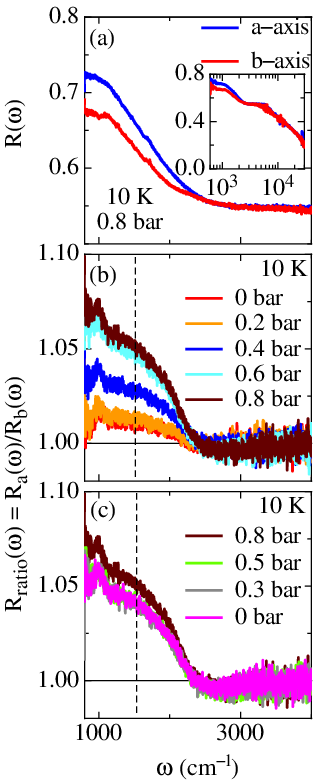Nematic-driven anisotropic electronic properties of underdoped detwinned Ba(Fe1-xCox)2As2 revealed by optical spectroscopy

We demonstrate the capability of optics to get insights into the nematic-driven tetragonal-to-orthorhombic structural transition in the underdoped regime of the title compounds. We have designed a novel pressure device, allowing us to perform optical reflectivity (R(ω)) measurements as a function of temperature under a variable in-plane uniaxial stress (Fig. 2.15), thus with adjustable population of the two twin orientations. The device consists of a sealed spring bellows, which can be expanded or retracted by varying the pressure of He-gas held inside, so that uniaxial stress on the lateral edge of the specimen can be tuned in-situ. The main findings evinced from our work are (i) the capability to release in-situ p, as symmetry breaking field, and thus to observe the anisotropy of the electrodynamic response at T << Ts for unstressed but fully detwinned crystals and (ii) the hysteretic nature (Fig. 2.16) of the optical anisotropy upon varying the stress due to the motion of the nematic domain walls. Moreover, the optical anisotropy gets progressively depleted with increasing Co-content in the underdoped regime, consistent with the doping dependence of the orthorhombicity but contrary to the non-monotonic behavior observed for the dc anisotropy. Our data give clear cut evidences for the impact of the ferro-elastic transition at energy scales deep into the electronic structure and for its fluctuations over a remarkable temperature interval above Ts. The discovered optical fingerprint of the nematic fluctuations originates from an intrinsic pressure-induced electronic anisotropy and bears testimony for the electronic nature of the structural phase transition. We have not observed any changes in the optical anisotropy at T < Tc in the underdoped regime, which would suggest that superconductivity emerges within an electronic polarized state.
